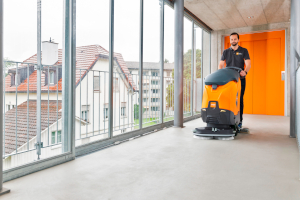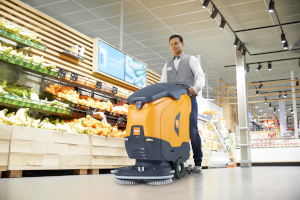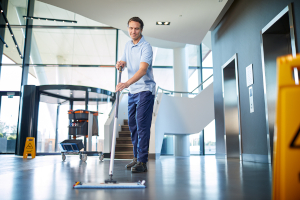Government targets to reduce CO2 emissions as part of the wider commitment to zero carbon by 2050 have focused attention on energy consumption across all parts of society. Meeting these targets on time represents a significant challenge but the sudden and unforeseen rise in energy prices this year means that businesses have an immediate need to reduce their consumption. Many cleaning tasks require energy: heating water; running electrical equipment and appliances; lighting and heating areas when cleaning is undertaken. There are some simple but effective ways to reduce energy consumption across these and other areas.
The first is to check that tasks are completed with the right processes, products, and equipment. This will help to ensure optimum efficiency and reduce the need for repeat cleaning which avoids additional water heating and electrical equipment running costs let alone savings in time and product consumption.
It is also good practice to ensure equipment is maintained correctly to ensure reliable and energy-efficient performance. This might include, for example, making sure pumps and filters in equipment are checked and cleaned regularly to remove blockages that cause inefficiency. Equipment used in hard water areas can be prone to lime-scale. This can accumulate and restrict the passage of water and impact the equipment’s reliability and limit the efficiency of the heating element. More energy will be required to heat the same amount of water. Regular descaling with a specialist product or switching to formulations that prevent lime-scale will help prevent this issue.
Another simple way to reduce energy costs is to switch to products that are effective at lower temperatures. It will cost roughly half as much to heat water from tap or room temperature to 40oC as it does to heat it to 60oC. Alternative low temperature formulations are available for tasks such as general cleaning, floorcare, and laundry (including disinfection) and will deliver payback from day one. Many can be swapped into existing processes with minimal retraining or significant change. Diversey’s Diveasy system, for example, uses cold water to remove carbon deposits from kitchen equipment.
Modern floorcare machines such as scrubber driers, sweepers, and vacuum cleaners are generally much more energy efficient than previous-generation models. Better design and innovations such as digital motors, energy-efficient batteries and chargers, and control systems that proactively optimise electrical, water, and product consumption all help to make the most of available energy. Features like these quickly deliver savings on running costs. The latest generation TASKI ULTIMAXX scrubber driers, for example, has increased battery efficiency and autonomy by 30 per cent over previous models.
Another option is to consider completely different processes. For example, used with water alone for general surface cleaning, microfibre can offer significant savings because no chemicals are used which means there is no need to heat a solution to a recommended working temperature. Scrubber drier pads impregnated with billions of microscopic diamonds deliver similar benefits and can often be used with existing machines.
Traditional cleaning is often completed when there are fewer people present, such as overnight or at weekends. This might be convenient but usually requires the building’s lighting and heating to remain on. Cleaning more when the building is in use can reduce or eliminate many of these extra costs. This so-called daytime cleaning is possible because modern equipment is often more compact, quieter, and less obtrusive than in the past. Cleaning product ranges also include formulations which can be used more safely when people are present.
Many of these changes can be implemented quickly and easily with little or no additional upfront investment. When more significant change is identified it becomes much easier to justify an investment as energy prices rise because savings offset the costs much more quickly. Reputable suppliers can advise on the most energy-efficient combination of their products for specific applications. They will support their claims with proper documentation and may have tools and calculators to help assess savings.



